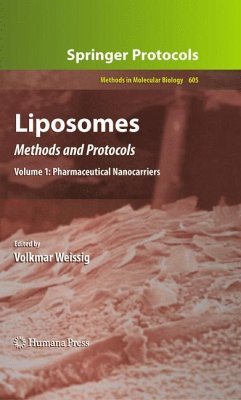Efforts to describe and model the molecular structure of biological membranes go back to the beginning of the last century. In 1917, Langmuir described membranes as a layer of lipids one molecule thick [1]. Eight years later, Gorter and Grendel concluded from their studies that "the phospholipid molecules that formed the cell membrane were arranged in two layers to form a lipid bilayer" [2]. Danielli and Robertson proposed, in 1935, a model in which the bilayer of lipids is sequestered between two monolayers of unfolded proteins [3], and the currently still accepted fuid mosaic model was proposed by Singer and Nicolson in 1972 [4]. Among those landmarks of biomembrane history, a serendipitous observation made by Alex Bangham during the early 1960s deserves undoubtedly a special place. His fnding that exposure of dry phospholipids to an excess of water gives rise to lamellar structures [5] has opened versatile experimental access to studying the biophysics and biochemistry of biological phospholipid membranes. Although during the following 4 decades biological membrane models have grown in complexity and functionality [6], liposomes are, besides supported bilayers, membrane nanodiscs, and hybrid membranes, still an indisputably important tool for membrane b- physicists and biochemists. In vol. II of this book, the reader will fnd detailed methods for the use of liposomes in studying a variety of biochemical and biophysical membrane phenomena concomitant with chapters describing a great palette of state-of-the-art analytical technologies.
From the reviews:
"The book provides in-depth descriptions of tumor and gene therapies, focusing on cationic liposomes. ... The book presents the most seminal studies on the application of liposomes in the pharmaceutical area published over the past two decades. ... the content provides the reader with a comprehensive overview of the topic and constitutes essential reading for those working or intending to work in the development of drug nanocarriers." (Nádia Araci Bou Chacra, Brazilian Journal of Pharmaceutical Sciences, Vol. 46 (4), October-December, 2010)
"Provide a comprehensive guide to the preparation, characterisation, and potential use of currently known types of liposomes. They are written using an interdisciplinary approach, and so provide essential knowledge of liposomes, for not only researchers in this particular field, but also scientists in wider pharmaceutical and biological areas. ... very inspiring - the potential for liposomes is immense - and these well-written chapters ignited notions of further applications - this is clearly a very exciting field." (Trudy L. Knight, BTS Newsletter, Issue 37, Winter, 2010)
"The book provides in-depth descriptions of tumor and gene therapies, focusing on cationic liposomes. ... The book presents the most seminal studies on the application of liposomes in the pharmaceutical area published over the past two decades. ... the content provides the reader with a comprehensive overview of the topic and constitutes essential reading for those working or intending to work in the development of drug nanocarriers." (Nádia Araci Bou Chacra, Brazilian Journal of Pharmaceutical Sciences, Vol. 46 (4), October-December, 2010)
"Provide a comprehensive guide to the preparation, characterisation, and potential use of currently known types of liposomes. They are written using an interdisciplinary approach, and so provide essential knowledge of liposomes, for not only researchers in this particular field, but also scientists in wider pharmaceutical and biological areas. ... very inspiring - the potential for liposomes is immense - and these well-written chapters ignited notions of further applications - this is clearly a very exciting field." (Trudy L. Knight, BTS Newsletter, Issue 37, Winter, 2010)








